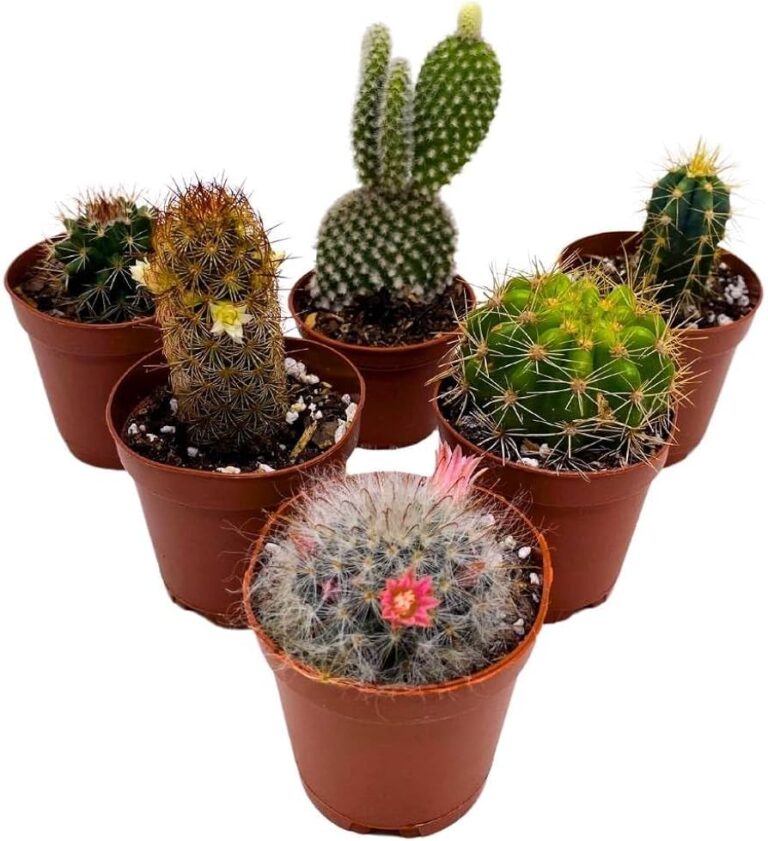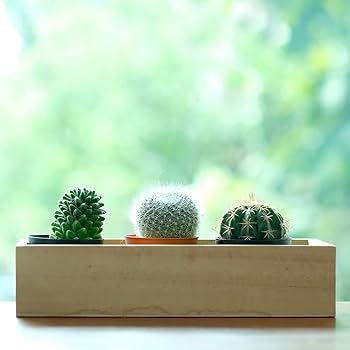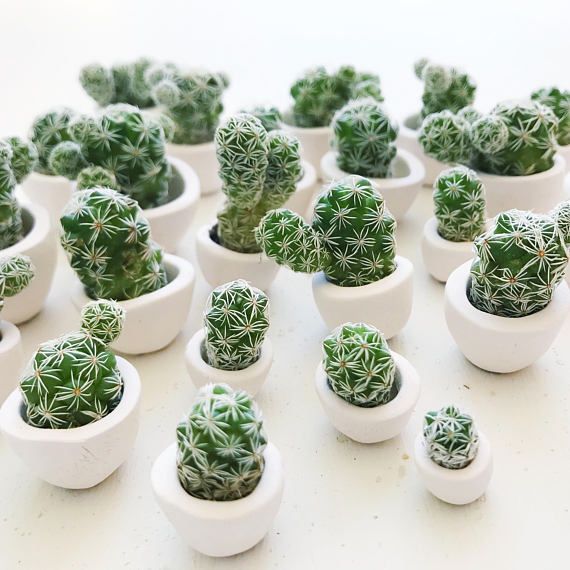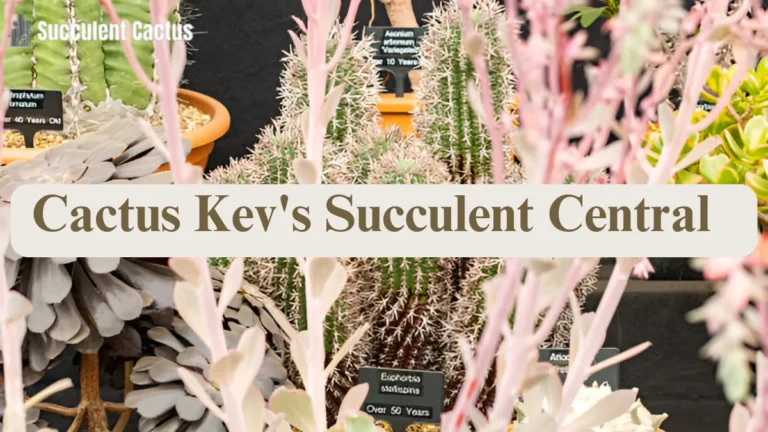The Ultimate Guide to Cactus and Succulent Soil Mix: A Recipe for Thriving Plants
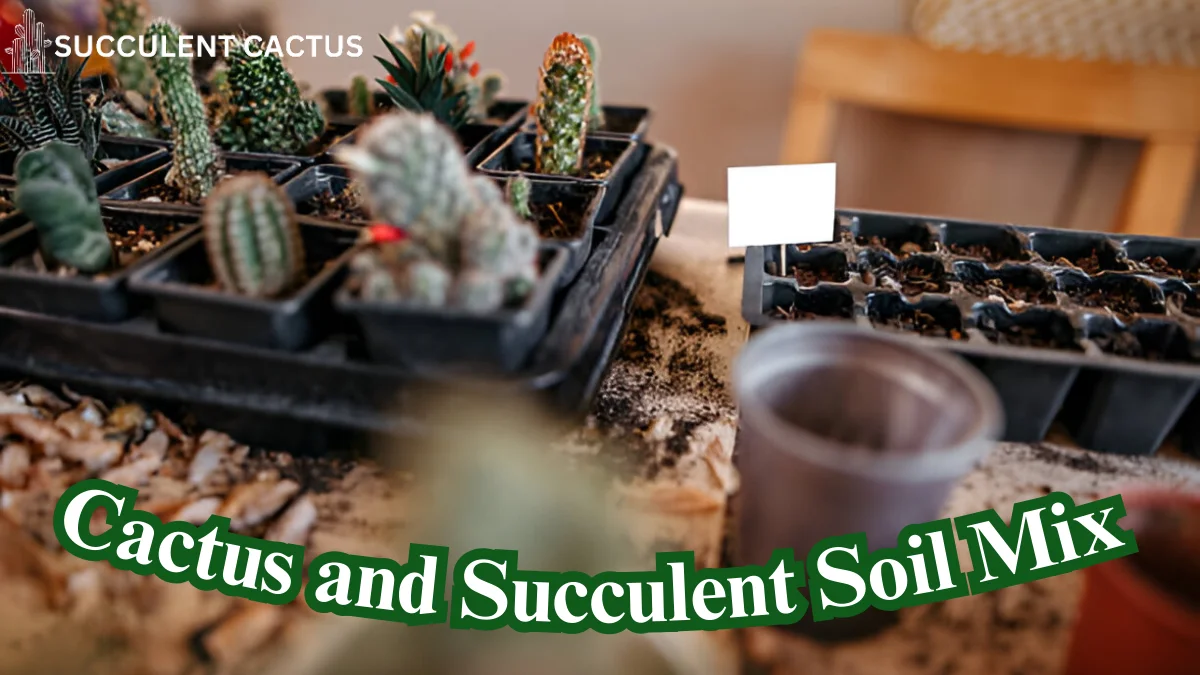
Cactus and succulents are prized for their unique beauty, resilience, and minimal care requirements. However, their health largely depends on the Cactus and Succulent Soil Mix you use. The right soil ensures proper drainage, aeration, and nutrient availability, which are essential for these plants to thrive. This blog delves into the details of cactus and succulent soil mixes, offering actionable tips, DIY recipes, and expert insights to help you grow healthy plants.
Understanding the Importance of Proper Soil Mix
A good soil mix is the foundation of healthy cactus and succulents. Here’s why it matters.
Benefits of a Well-Balanced Soil Mix
- Ensures excellent drainage to prevent root rot.
- Promotes aeration for healthy root growth.
- Retains adequate moisture without waterlogging.
What Happens with the Wrong Soil?
- Compacted soil can suffocate roots.
- Poor drainage leads to overwatering, causing fungal infections.
- Nutrient-poor soil stunts plant growth.
How Cactus and Succulent Needs Differ from Other Plants
Unlike most plants, cacti and succulents require soil that mimics their natural desert habitats. This includes sandy, gritty, and low-organic mixes that encourage rapid water flow.
Components of a Perfect Cactus and Succulent Soil Mix
Creating the ideal soil mix involves understanding its key components.
Gritty Minerals for Drainage
Gritty materials like sand, perlite, and pumice ensure the soil doesn’t retain too much water.
- Sand: Provides excellent drainage and supports root stability.
- Perlite: Enhances aeration and prevents compaction.
- Pumice: Absorbs excess water while remaining lightweight.
Organic Matter for Nutrition
Organic materials like coconut coir or compost provide nutrients.
- Coconut Coir: Retains water while offering good aeration.
- Compost: A small quantity adds necessary nutrients.
The Role of Soil Amendments
Amendments like crushed granite and charcoal enhance drainage and reduce soil compaction.
| Component | Purpose | Examples |
| Gritty Minerals | Improves drainage and aeration | Sand, Perlite, Pumice |
| Organic Matter | Provides nutrients and retains water | Coconut Coir, Compost |
| Soil Amendments | Reduces compaction, improves texture | Crushed Granite, Charcoal |
DIY Cactus and Succulent Soil Mix Recipe
Mix your soil at home to suit the specific needs of your plants.
Ingredients
- 2 parts gritty minerals (e.g., sand, perlite, or pumice)
- 1 part organic matter (e.g., coconut coir or compost)
- ½ part soil amendment (e.g., crushed granite or charcoal)
Step-by-Step Guide
- Mix all components in a clean container.
- Check the texture to ensure a gritty, well-draining consistency.
- Adjust proportions based on your plant’s needs.
Tips for Customizing Your Soil Mix
- Increase sand or perlite for desert cacti.
- Add more organic matter for succulents that prefer slightly more moisture.
Pre-Made Soil Mixes: Are They Worth It?
Pre-packaged soil mixes are convenient, but are they effective?
Pros of Pre-Made Mixes
- Saves time and effort.
- Often contains pre-balanced nutrients.
- Available at most garden centers.
Cons of Pre-Made Mixes
- May lack sufficient drainage for some cacti.
- Can be more expensive than DIY mixes.
- Quality varies by brand.
Best Brands for Cactus and Succulent Soil Mix
- Miracle-Gro Cactus, Palm & Citrus Potting Mix
- Black Gold Cactus Mix
- Hoffman Organic Cactus and Succulent Mix
Signs Your Soil Mix Needs Adjustment
Understanding when your soil mix requires changes is essential for maintaining healthy cacti and succulents. These plants often signal their discomfort through changes in appearance and growth patterns. Recognizing these signs early can save your plants from potential damage.
Yellowing or Wilting Leaves
Yellowing or wilting leaves are among the most common indicators of soil problems. In most cases, this occurs due to overwatering, which can result from poor drainage in the soil mix. When excess water remains trapped, the roots of the plant suffocate, leading to a lack of oxygen.
- How to Fix It:
- Check the pot for drainage holes. If they’re clogged, clean them.
- Repot the plant into a fresh, well-draining soil mix.
- Ensure that the container allows water to escape freely.
Mold or Fungal Growth
Mold or fungal growth on the surface of the soil is another red flag. This typically indicates excessive moisture in the soil, often caused by a mix that retains too much water. Over time, this can lead to root rot or even the death of the plant.
- How to Fix It:
- Remove the top layer of moldy soil and replace it with fresh, dry soil.
- Avoid misting your plants, as this can contribute to surface moisture.
- Allow the soil to dry out completely between waterings.
Stunted Growth or Root Problems
If your cactus or succulent shows slow or stunted growth, the issue may lie with the soil. Compacted soil that lacks aeration can restrict root development, depriving the plant of the nutrients it needs.
- How to Fix It:
- Gently loosen compacted soil using a chopstick or similar tool.
- Repot the plant in a mix containing gritty materials like perlite or pumice.
- Fertilize lightly during the growing season to provide additional nutrients.
Table: Common Soil Issues and Their Solutions
| Problem | Symptom | Solution |
| Overwatering | Yellowing or wilting leaves | Use a gritty, well-draining soil mix |
| Excessive Moisture | Mold or fungal growth | Improve drainage and avoid misting |
| Compacted Soil | Stunted growth, weak roots | Loosen soil and repot in a gritty mixture |
Soil Mix for Specific Types of Cacti and Succulents
Not all cacti and succulents thrive in the same type of soil mix. By tailoring the soil to each plant’s natural habitat, you can meet their unique needs and promote healthy growth.
Desert Cacti
Desert cacti, such as barrel cacti or prickly pears, naturally thrive in arid environments with sandy, well-drained soils. These plants are highly sensitive to overwatering, making drainage the most critical factor in their soil mix.
- Ideal Proportions:
- 70% gritty materials (sand, pumice, perlite)
- 20% organic matter (coconut coir or compost)
- 10% amendments (crushed granite or charcoal)
- Tips for Success:
- Add a thin top layer of gravel to prevent water retention.
- Avoid overly rich organic soils, as these can harm desert cacti.
Jungle Cacti
Jungle cacti, such as Christmas cacti or epiphytic cacti, come from tropical rainforests. Unlike desert cacti, they prefer slightly more moisture and organic content in their soil.
- Ideal Proportions:
- 50% gritty materials
- 40% organic matter
- 10% amendments
- Tips for Success:
- Incorporate peat moss for moisture retention.
- Use a well-balanced fertilizer during their active growing period.
Lithops
Lithops, also known as “living stones,” have highly specialized soil needs. Originating from the rocky deserts of southern Africa, lithops require extremely fast-draining soil.
- Ideal Proportions:
- 80% gritty materials (coarse sand, pumice)
- 10% organic matter
- 10% soil amendments
- Tips for Success:
- Avoid overwatering at all costs; lithops store water in their leaves.
- Use a shallow container to mimic their natural habitat.
| Plant Type | Recommended Soil Mix Proportions | Special Considerations |
| Desert Cacti | 70% grit, 20% organic, 10% amendments | Focus on excellent drainage |
| Jungle Cacti | 50% grit, 40% organic, 10% amendments | Retain moderate moisture |
| Lithops | 80% grit, 10% organic, 10% amendments | Extremely fast-draining, minimal watering |
Soil Maintenance and Renewal
Regular maintenance of your soil mix ensures your plants remain healthy over time. Soil, like any growing medium, degrades over time and loses its efficiency.
When to Refresh Soil
Most experts recommend repotting cacti and succulents every 1-2 years. Over time, soil compacts and loses its ability to drain properly, leading to water retention and poor root health.
- Signs You Need to Repot:
- Roots emerging from drainage holes.
- Soil that stays wet for too long after watering.
- Visible signs of nutrient deficiency in your plants.
Cleaning and Sterilizing Old Soil
If you want to reuse old soil, sterilize it first to remove pathogens and pests.
- How to Sterilize Soil:
- Spread soil on a baking tray.
- Heat in an oven at 200°F for 30 minutes.
- Allow to cool before use.
Mulching for Outdoor Plants
Mulching helps retain moisture in outdoor gardens while improving the overall aesthetic. Use gravel, small rocks, or sand as mulch for your cacti and succulents.
- Benefits of Mulching:
- Prevents weeds.
- Reduces soil erosion.
- Adds a decorative touch.
8. DIY Soil Mix for Cactus and Succulent Enthusiasts
Creating your soil mix is a cost-effective and rewarding way to care for your cacti and succulents. By customizing the ingredients, you can tailor the mix to meet the unique needs of your plants and ensure they thrive.
Ingredients for a Basic DIY Soil Mix
The ideal cactus and succulent soil mix should provide excellent drainage, proper aeration, and minimal water retention. Here are the primary components:
- Gritty Materials: Sand, pumice, perlite, and gravel improve drainage and prevent soil compaction.
- Organic Matter: Coconut coir, compost, or peat moss provide essential nutrients.
- Soil Amendments: Crushed granite, activated charcoal, or limestone can enhance aeration and nutrient retention.
Basic DIY Recipe:
- 50% gritty materials (e.g., pumice and coarse sand)
- 40% organic matter (e.g., coconut coir or compost)
- 10% soil amendments (e.g., crushed granite or charcoal)
Step-by-Step Guide to Mixing Soil
- Gather Materials: Assemble all ingredients in a clean, dry area. Ensure that the materials are free of pests or debris.
- Measure Proportions: Use a bucket or measuring container to maintain accurate ratios.
- Mix Thoroughly: Combine the materials in a large container or wheelbarrow. Use a trowel or gloved hands to blend the components evenly.
- Test the Mix: Take a small handful of soil, water it lightly, and observe how quickly the water drains. Adjust proportions if necessary.
Benefits of DIY Soil Mixes
- Cost Savings: DIY mixes are often cheaper than store-bought options.
- Customization: You can tailor the mix to specific plant types and environmental conditions.
- Quality Control: By sourcing your materials, you can ensure the absence of harmful chemicals or pests.
| Ingredient | Purpose | Example Materials |
| Gritty Materials | Improves drainage | Sand, pumice, perlite, gravel |
| Organic Matter | Provides nutrients | Coconut coir, compost, peat moss |
| Soil Amendments | Enhances aeration/nutrients | Crushed granite, charcoal |
Common Mistakes When Mixing or Using Soil
Despite the best intentions, gardeners often make mistakes when creating or using soil mixes for cacti and succulents. Learning to avoid these pitfalls can ensure healthier plants and better results.
Overuse of Organic Materials
A common mistake is adding too much organic matter, such as compost or peat moss, to the soil. While organic materials are essential for providing nutrients, they can retain excess water, leading to root rot.
- How to Avoid It:
- Stick to the recommended proportions of 40% or less organic matter.
- Monitor soil moisture regularly to prevent overwatering.
Ignoring Drainage Requirements
Some gardeners overlook the importance of proper drainage in pots and soil mixes. Poor drainage causes water to stagnate, damaging the roots.
- How to Avoid It:
- Always use pots with drainage holes.
- Add a layer of gravel or stones at the bottom of the pot for added drainage.
Using Garden Soil as a Base
Regular garden soil is often too heavy and compacted for cacti and succulents. It can hold too much moisture and lacks the gritty texture these plants require.
- How to Avoid It:
- Avoid using garden soil in your mix altogether.
- Opt for specialized materials like coarse sand and pumice.
| Mistake | Consequence | Solution |
| Excess organic material | Retains too much moisture | Reduce organic content in the mix |
| Poor drainage | Leads to root rot | Ensure pots and soil allow water to escape |
| Using garden soil | Compacts and holds water | Use coarse, gritty materials |
Expert Tips for Perfecting Your Soil Mix
Even experienced gardeners continually refine their soil mixes to optimize plant health. Incorporating expert tips can help you create the ideal environment for your cacti and succulents.
Sterilizing Ingredients
Before using materials like sand or compost, sterilize them to eliminate pests, bacteria, and fungi that could harm your plants.
- How to Sterilize:
- Bake the materials in the oven at 200°F for 30 minutes.
- Allow them to cool before use.
Adjusting Soil for Climate
Your local climate plays a significant role in soil performance. For example, in humid regions, a grittier mix is necessary to prevent excess moisture retention. In arid climates, a slightly more organic mix helps retain moisture for longer.
- Key Adjustments:
- Humid climates: Increase gritty materials to 70%.
- Arid climates: Increase organic matter to 50%.
Experimenting with Amendments
Don’t be afraid to experiment with different soil amendments to enhance the mix. For example, adding biochar can improve soil aeration and nutrient retention.
- Other Useful Amendments:
- Worm castings for natural nutrients.
- Crushed eggshells for calcium.
Table: Expert Adjustments Based on Climate
| Climate | Adjustment |
| Humid | Increase gritty materials for better drainage |
| Arid | Add more organic matter for moisture retention |
Comparing Store-Bought vs. DIY Soil Mixes
Both store-bought and DIY soil mixes have their pros and cons. The best option depends on your gardening experience, budget, and plant requirements.
Benefits of Store-Bought Soil Mixes
Store-bought mixes are convenient and specifically formulated for cacti and succulents. They save time and effort, especially for beginners.
- Advantages:
- Pre-mixed and ready to use.
- Consistent quality and composition.
- Suitable for those with limited time or resources.
Advantages of DIY Soil Mixes
DIY soil mixes allow for customization and cost savings. You can adjust the proportions to suit specific plant types and environmental conditions.
- Advantages:
- Tailored to your plants’ needs.
- Often more affordable in the long run.
- Gives you control over the quality of materials.
| Comparison | Store-Bought Mixes | DIY Mixes |
| Convenience | It can be expensive over time | Requires time and effort |
| Customization | Limited | Fully customizable |
| Cost | Can be expensive over time | Cost-effective for larger quantities |
Sustainable Practices for Soil Mix Preparation
As a cactus and succulent enthusiast, adopting sustainable practices can make your gardening efforts more eco-friendly.
Using Locally Sourced Materials
Locally sourcing ingredients like sand, pumice, or compost reduces transportation emissions and supports your local economy.
- Benefits:
- Lower carbon footprint.
- Fresher and more affordable materials.
Recycling and Reusing Soil
Instead of discarding old soil, sterilize and rejuvenate it with fresh amendments. This reduces waste and saves resources.
- How to Rejuvenate Soil:
- Sterilize old soil to kill pathogens.
- Add fresh organic matter and gritty materials.
Reducing Plastic Use
Avoid plastic pots and opt for sustainable alternatives like terracotta or biodegradable containers. Repurpose household items as planters to minimize waste.
Table: Sustainable Practices for Soil Preparation
| Practice | Benefit |
| Locally sourced materials | Reduces environmental impact |
| Recycled soil | Minimizes waste and saves resources |
| Plastic-free containers | Eco-friendly and biodegradable options |
FAQs
- What is the best soil mix for cacti and succulents?
The best soil mix contains a combination of gritty materials like pumice or perlite (50-70%), organic matter like compost (30-40%), and amendments for aeration and nutrients (10%). - Can I use regular potting soil for cacti?
Regular potting soil retains too much moisture and is unsuitable for cacti. Always mix it with gritty materials like sand or pumice for better drainage. - How often should I change the soil for my succulents?
Repot your succulents every 1-2 years to refresh the soil and ensure proper drainage. - What happens if the soil mix is too rich?
Overly rich soil retains water, leading to root rot and poor plant health. Balance it with gritty materials for drainage. - Can I make my own cactus soil at home?
Yes, DIY cactus soil is easy to make using materials like coarse sand, pumice, compost, and soil amendments.
Conclusion
Creating the perfect cactus and succulent soil mix is essential for their growth and health. By understanding the unique needs of these plants, selecting the right ingredients, and maintaining your soil properly, you can cultivate a thriving collection. Whether you choose to buy pre-made soil or craft your mix, always prioritize drainage, aeration, and sustainability. With the right approach, your cacti and succulents will flourish, adding beauty and life to your home or garden.

